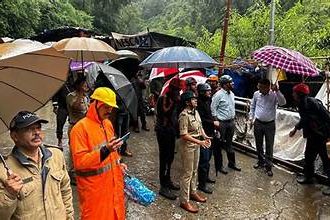Arthritis can affect children too. It is not a condition exclusive to older people. 1 in 250 kids is affected by some form of arthritis. Juvenile idiopathic arthritis (JIA) is a form of chronic arthritis seen in children under the age of 16 years and can affect 1 in 1000 children. In JIA the immune
Arthritis can affect children too. It is not a condition exclusive to older people. 1 in 250 kids is affected by some form of arthritis. Juvenile idiopathic arthritis (JIA) is a form of chronic arthritis seen in children under the age of 16 years and can affect 1 in 1000 children. In JIA the immune system attacks the joints. Our bodies have an immune system that fights infections to keep us healthy. At times. the body’s immune system mistakes a normal part of the body as foreign (like a germ) and starts attacking the body itself. JIA is not passed on from parent to child. Genes do play a role but are only one of several factors necessary to develop JIA. There are myths that JIA is caused by being too cold, living in a cold climate, or eating particular foods. None of these contribute to a child getting JIA.
JIA can vary in presentation and severity. Apart from joints, inflammation can also affect the eyes and gut. Symptoms usually last for 4 weeks or longer. Some of the symptoms and signs of an inflamed joint include joint swelling, pain, stiffness (especially in the morning), and warmth around the joint. Children may not have all of these in every joint that is inflamed. Less commonly they may also have other symptoms such as fever, rash, loss of appetite, and loss of weight. The symptoms of JIA change over time, sometimes even day to day. Children often have times when they feel much better, and then times where when they notice more symptoms and feel more tired, stiff, or sore. This is called a ‘flare’ or ‘flare-up’. Flare-ups can sometimes be triggered by infections, and sometimes they happen without any apparent reason.
JIA is often hard to diagnose because the symptoms can be different in different children and can appear like some other childhood illnesses. There is no single test that can confirm a diagnosis of JIA, and often other possibilities have to be ruled out first. This may take time and requires a thorough evaluation by a pediatric rheumatologist. Blood tests to measure the amount of inflammation, ultrasound scans, or X-rays to visualize the joints may be necessary. Since JIA can affect the eyes (called uveitis), regular eye screening is of paramount importance once a diagnosis of JIA is made. Moreover, chronic eye inflammation in children can be asymptomatic and may come to notice only when vision is completely lost if regular eye checks are not undertaken.
The main ways of treating arthritis include medications to control the inflammation exercises to keep the joints moving well and the muscles strong, joint injections to reduce inflammation in particular joints, and pain management strategies to reduce pain. If the inflammation is not treated, it can damage the joint including the cartilage and the surrounding bone. Muscles around the joint can become weak and the joint may lose some of its range of movement. The main goal of treatment is to get children back to their normal activities and to prevent arthritis from interfering with a full and active lifestyle. If treated in time by a specialist in pediatric rheumatology, children with JIA can lead an active life and most of the long-term consequences can be avoided.
~END~

















Leave a Comment
Your email address will not be published. Required fields are marked with *